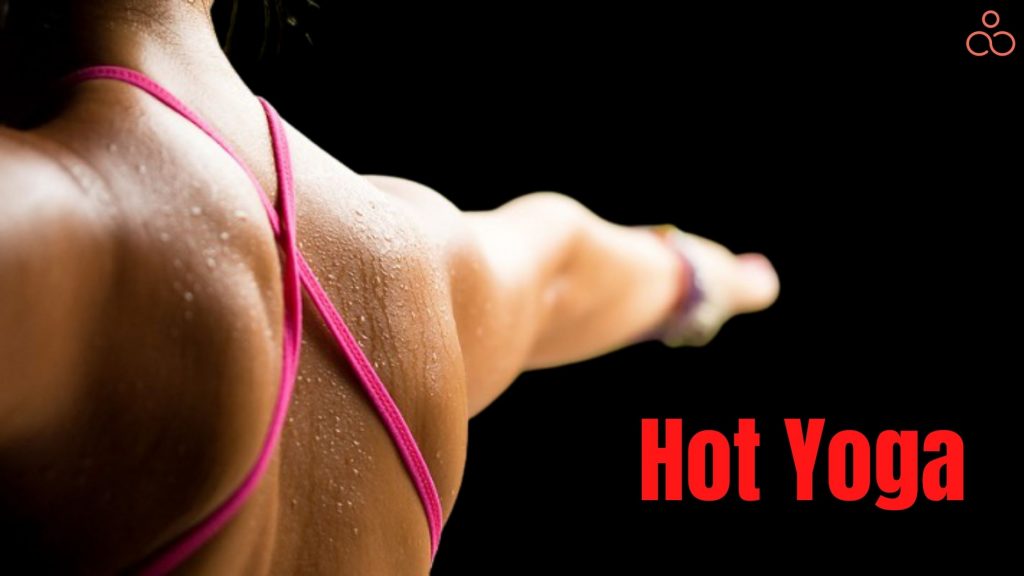This article was medically reviewed by Dr. Verma
In today’s fast-paced, always-on world, many people are looking for ways to slow down and relax. Hot Yoga is a form of exercise that is rapidly growing in popularity because it does just this. It combines the benefits of traditional Yoga with the gains of a heated room. You feel more relaxed because the body relaxes more in a warm environment. And because of the heat treatment, you get to open up your body’s natural detoxification pathways due to sweating.
So, What is Hot Yoga?
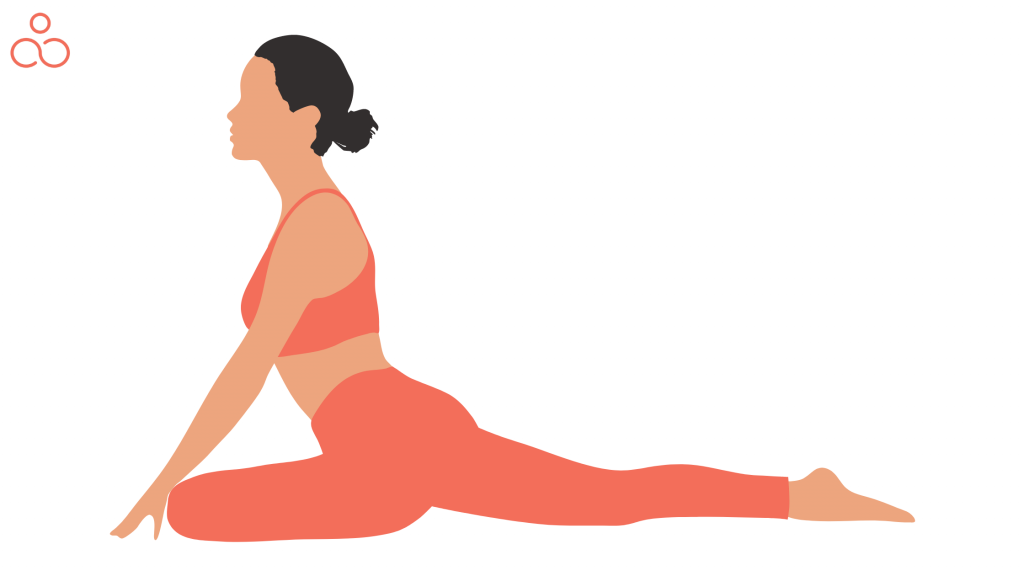
This Yoga form aims to promote and improve flexibility, strength, and balance through breathing techniques. It also helps people in losing weight by burning calories. The main idea behind Hot Yoga is that it aims to detoxify the body by removing toxins through sweating, and at the same time improving blood circulation. It also helps in preventing several disorders like insomnia, arthritis, etc.
The first hot yoga form was called Bikram Yoga, and Bikram Choudhury devised it in the 1970s. The specialty of this yoga form is that the temperature is high and is 105 degrees Fahrenheit (or 40 degrees celsius). The humidity of the yoga room is maintained at a level of 40 percent. This makes you sweat intensively, and as a result, your cardiovascular system, muscles, and entire body get a bunch of benefits. Your muscles get loosen up because of the intense heat.
History and Origin of Hot Yoga
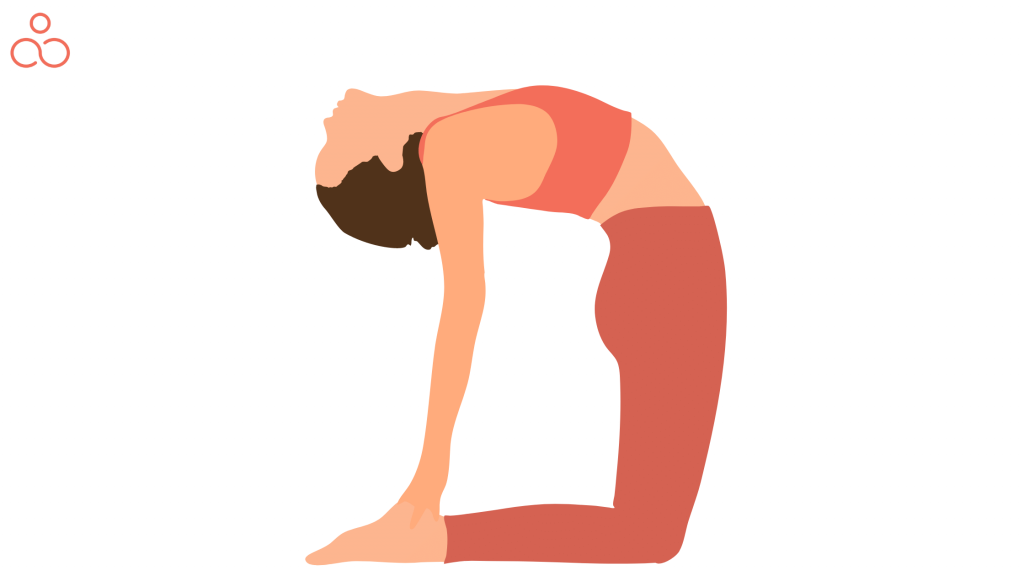
There is a common misconception that many of us might have. And that is, we tend to use the term hot yoga interchangeably with Bikram Yoga. But both the terms are not the same. Hot Yoga is developed from Bikram yoga pioneered by Mr. Bikram Choudhury, who had studied Hatha Yoga and its benefits for more than 15 years. It originated in the 1970s.
It is believed that Lord Shiva practiced it in the Himalayas during ancient times. He would take baths at high altitudes to stay healthy, strong, and disease-free all his life. Thus, Hot Yoga originated from this practice over 5000 years ago, which he later taught to his consort Parvati.
It was later practiced by the Hindu and Buddhist monks who wanted to purify their body, mind, and soul at high altitudes or in the Himalayas. Which they later passed down generations as a tradition to date.
How Hot Yoga Has Evolved Over Time
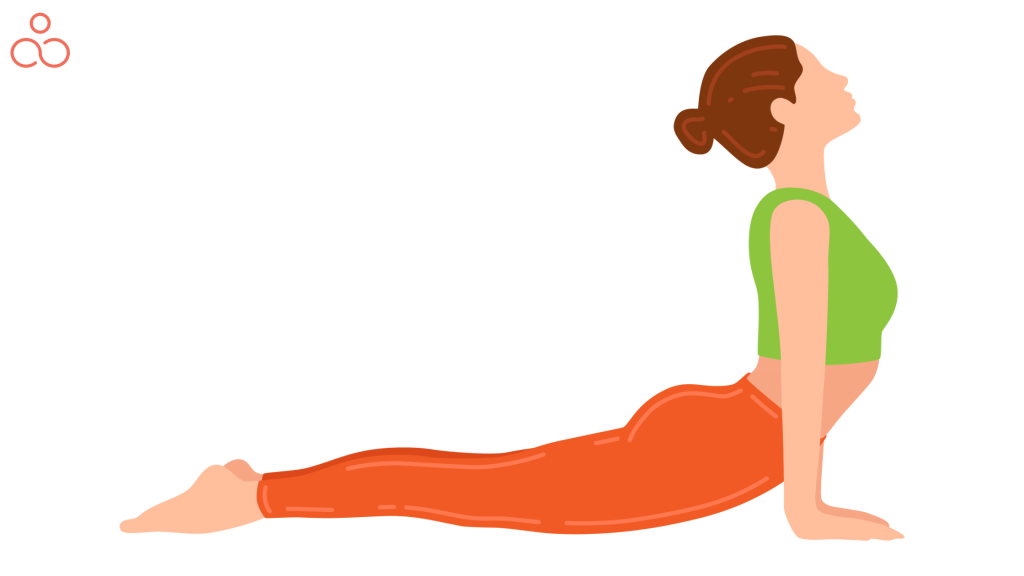
The present version of Hot Yoga was developed by Mr. Bikram Choudhury, who had studied Hatha yoga for more than 15 years. He wanted to develop a safe and effective way to lose weight through breathing techniques while improving flexibility, strength, and balance in just 90 minutes sessions.
Many hot yoga studios were initially named after their founder ‘Bikram Chaudhary’ and were called ‘Bikram Yoga Studio.’ But, after the revelation of the sexual abuse, the hot yoga teachers and practitioners started refraining from having their names attached to Bikram Choudhury. Also, many hot yoga studios dropped the word “Bikram” from their names to disassociate themselves from Choudhury.
Hot Yoga is still popular today, and its benefits are abundant. But, since this form of Yoga includes extreme strenuous exercises under heated conditions, there are specific preventive measures that you must take before and during your sessions. We will let you know all the tips and factors that will help you maintain your safety during your hot yoga sessions.
Who should avoid engaging in Hot Yoga?
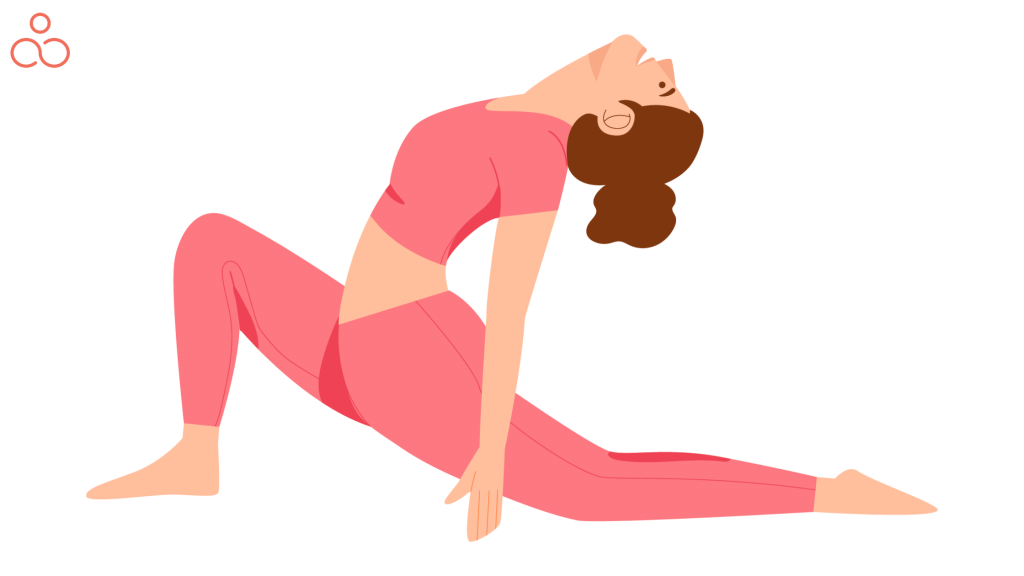
Since Hot Yoga is a rigorous form of Yoga, the person doing it must have the required physical strength. It may be sad to hear, but hot Yoga may not suit everyone, and it is best suggested for people who are physically fit and have no heart-related issues. So, if you have any cardiac problems or issues with dehydration, it is better not to involve yourself in Hot Yoga, and it may cause you physical harm.
Moreover, if heat intolerance is also an issue that one faces, it is recommended to keep away from hot Yoga. And not just heat intolerance, be it any type of heat-related illnesses, such as heat stroke, one must refrain from doing hot Yoga. It is advisable to take permission from your doctor before starting it if you suffer from breathing problems like asthma or bronchitis etc.
If you are a mother-to-be, we highly recommend you stay away from hot yoga.
Things to consider before deciding to go for Hot Yoga
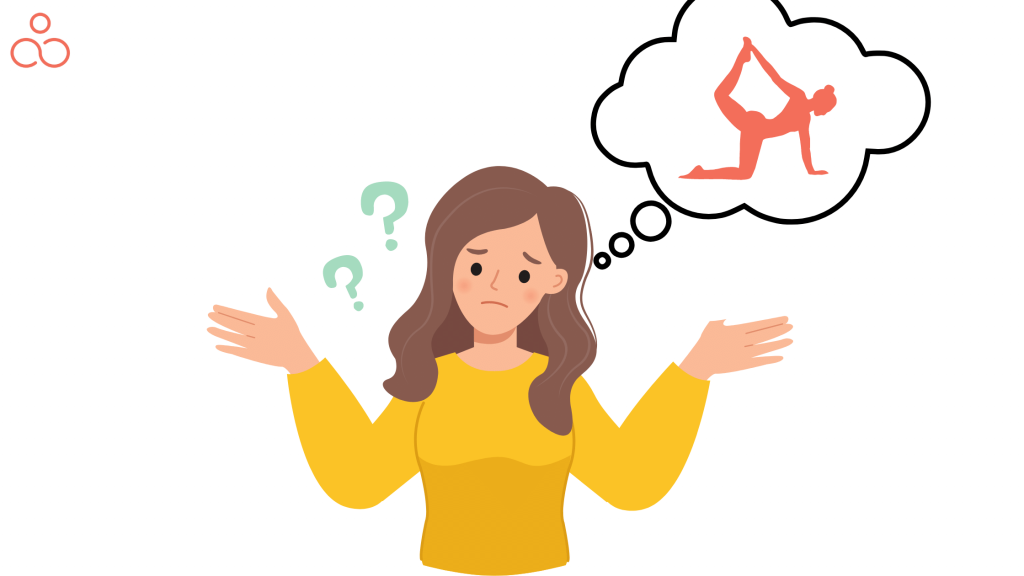
Want to know some dos and don’ts of hot yoga classes? Here they are.
1. Who Should avoid doing hot yoga
People with High Blood Pressure, Pregnancy, and vertigo/dizziness must consult their medical practitioner before trying out this form of Yoga. They may endanger their health under the extreme heat conditions present during the sessions. Ensure that you drink loads and loads of water because hydration is essential! Only then the detoxification would really work.
2. What to wear to a hot class?
One needs comfortable clothes that can allow proper air circulation between them and their body so that there’s no sweat accumulation on any part of the body, which could lead to skin rashes later on. And, if you feel dizzy or sick at any point in your session, ensure that you stop immediately and take the appropriate health measures. Remember, prevention is always better than cure!
Different clothing materials may sustain sweat marks as sweating is inevitable in hot yoga sessions. Thus, ensure to know whether the clothing material you are wearing holds stains or not. Ensure that you do not wear clothes whose materials can sustain sweat stains.
Also, try to cover less. Too tight and too-covered clothing may hinder smooth movements. Since hot yoga sessions are rigorous, it is best to wear shorts and tank tops.
3. Can I do hot yoga during menstruation?
Yes, you can. If you are menstruating, ensure you have the required pads with you. Also, it is best to avoid light-colored bottom wear during yoga sessions these days. Since the yoga sessions are rigorous, spotting might become prominent. Just be careful that you are not losing too much blood before you start a hot yoga session. For which in any case you should consult a gynecologist.
4. What else to consider during a hot yoga session?
This point is more like what to expect than what to consider. There should be shorter warm-up sessions in hot yoga classes like the regular yoga sessions. The reason is that the temperature in hot yoga rooms is already high, which makes your body prepared for the upcoming rigorous exercises of hot yoga. So, ensure that there are shorter warm-up sessions in hot yoga classes.
5. What to do when I feel tired?
Whenever you feel overly tired and need a break, do take a short break. There is no harm in doing so. Instead, your body will get boosted up from the short break. Also, sometimes short breaks are necessary, so that you sustain the session while you continue to enjoy it.
A little head up. Hot Yoga has some limitations and restrictions. Since it is very physical and rigorous, it has the potential to harm you physically. There is a lot of stretching, bending, and twisting involved. And this might not suit everybody. There are possibilities of getting dehydrated, having heat strokes, sore muscles from excessive stretching. So be aware of yourself and what you are stepping into.
How is Hot Yoga different from Pilates?
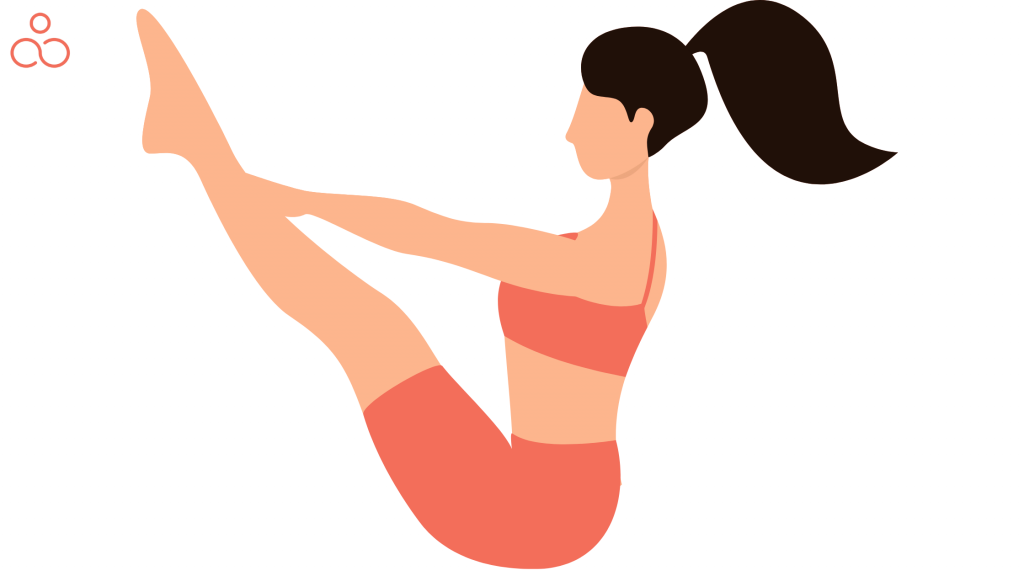
Although both pilates and hot Yoga include breathing and stretching, both are different from each other in many ways. Pilates is more focused on working on your core, whereas Hot Yoga benefits the muscles of your entire body, be it small or large muscle groups. Pilates often makes use of machines. But, you will never find the presence of machines in hot Yoga.
When you integrate intense cardio and muscle toning exercises in a heated room set at 90 degrees Fahrenheit (32 degrees), it is called Hot Pilates. Unlike Hot yoga, hot pilates gives you some more danced, bolder approach and keeps you moving.
Different Types of Hot Yoga
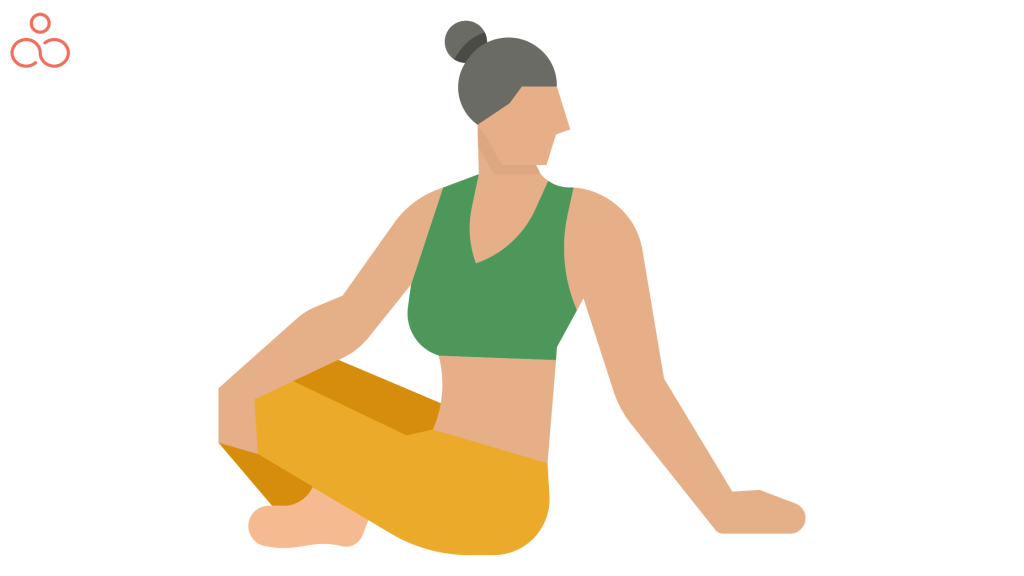
There are mainly Four types of hot Yoga:
- Bikram Yoga: Bikram yoga was pioneered by Bikram Choudhary and is a 90 minutes session that comprises 26 postures. This form of yoga is done in a heated studio set at 105 degrees Fahrenheit. These classes have a militaristic feel, and each session lasts for 90 minutes.
- Hot Power Yoga: Hot Power yoga is a type of yoga that is performed in a heated atmosphere to release muscles and promote sweating. The room temperature is typically set between 85 and 100 degrees Fahrenheit, which is a little cooler than other hot yoga techniques. Its session lasts for 60-90 minutes, with no fixed number of postures to be performed in each class.
- Moksha Yoga: Ted Grand and Jessica Robertson, two Canadian yoga instructors, developed Moksha yoga in 2004 as a hot yoga practice. With its roots in classical yoga, this style of hot yoga contains more than 40 different poses. It gives you cardiovascular exercise and helps calm your mind and reduce stress.
- Baptiste Yoga : Baptiste Yoga or Baptiste Power Vinyasa (BPV) is a hot power yoga style. It was created by Baron Baptiste, who claims that it is centered on asana (poses), meditation, and self-inquiry. It can be adapted to any degree of physical ability. This form of yoga combines many yoga styles, such as Bikram, Iyengar, and Ashtanga.
All these hot yoga styles aim to detoxify the body by removing toxins through the sweating process but vary in their intensity level and methods used during each session.
Poses(Asanas) in Bikram Yoga
- Pranayama or Standing Deep Breathing
This pose is done at the start of every session as it helps increase oxygen levels, strengthening the lungs and nervous system. It also stimulates circulation as well as digestive systems.
- Ardha Chandrasana or Half Moon Pose
This posture tightens the abdominal muscles and spine, and the organs involved in digestion.
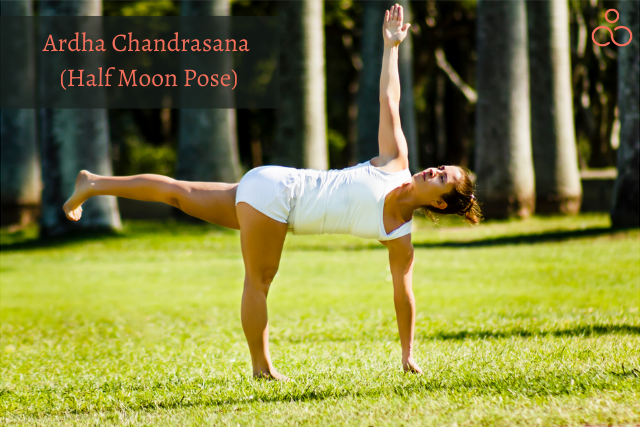
- Utkatasana or Chair Pose
Next on the list, we have Utkatasana. It is sometimes called a Chair Pose in other lineages of Yoga, and this posture improves blood flow and the strength of the legs.
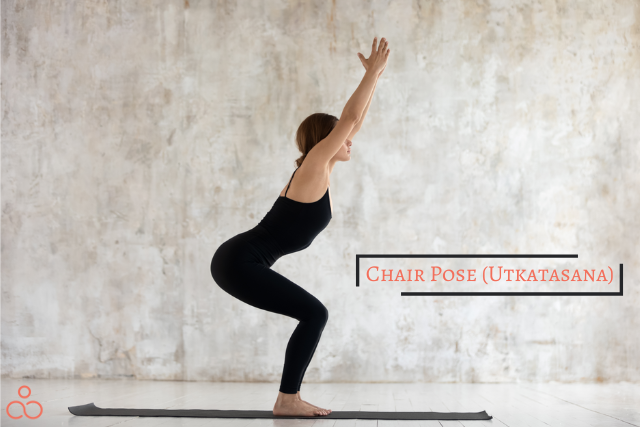
This pose is a great way to challenge your balance! This posture strengthens, stretches, and provides greater mobility to all of your major joints.
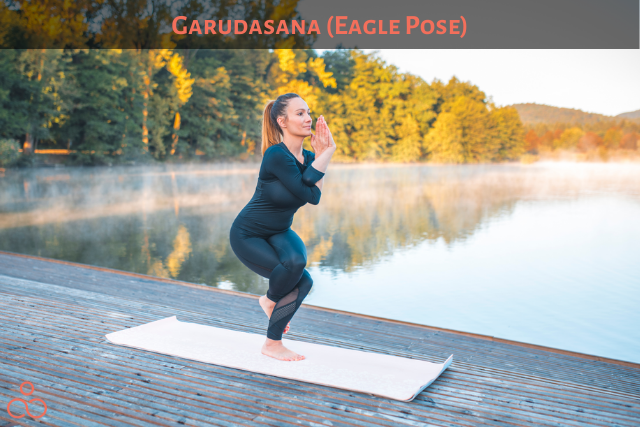
- Dandayamana Janushirasana or Standing Head-to-Knee Pose
This challenging posture, Dandayamana Janusirsana, Standing Head-to-Knee Pose, engages the entire body. It strengthens and stretches the legs, core, and arms while boosting concentration.

- Dandayamana-Dhanurasana or Standing Bow-Pulling Pose
Using the Bikram style of Yoga, this transition pose is aimed to increase attention and patience while also improving strength and flexibility. The benefits of this pose are said to extend to better circulation throughout the body. It also helps balance blood flow from one side of the body to the other and aids in increasing your balance both physically and mentally.
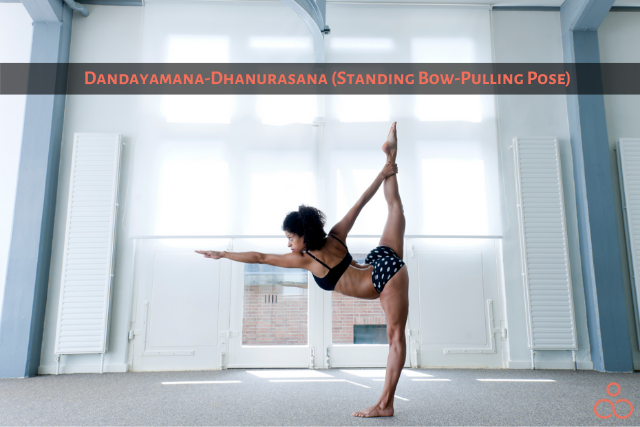
- Tuladandasana or Balancing Stick Pose
The next pose in the Bikram sequence is Tuladandasana or Balancing Stick Pose. It would be best to utilize balance, determination, and core strength in this pose. Additionally, this pose increases circulation (especially to the heart and brain).
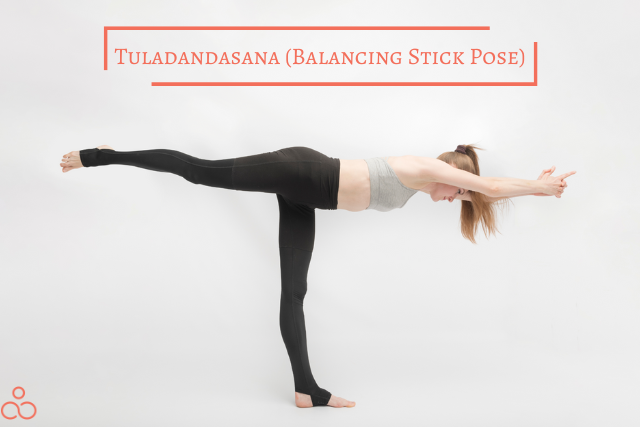
- Dandayamana-Bibhaktapada-Paschimotthanasana or Standing Separate Leg Stretching Pose
Take a break from balancing on your tippy-toes with Standing Separate Leg Stretching Pose. This posture targets the legs, spinal muscles, and especially the sciatic nerve area. It is believed to enhance the function of all critical abdominal parts and their associated processes.
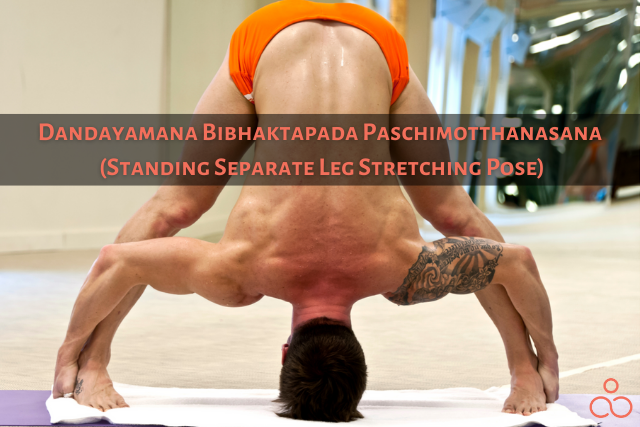
- Trikonasana or Triangle Pose
Focus in Triangle Pose would be your hips, legs, and core. This version of the triangle pose practiced in Bikram yoga is different from other styles because it is called the Extended Side Angle pose which is considered as an excellent stretch for your side body.
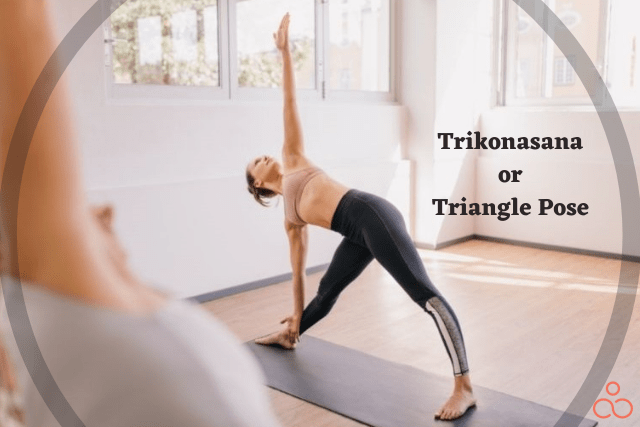
- Dandayamana Bibhaktapada Janushirasana or Standing Separate Leg Head to Knee Pose
This pose is a powerful stretch in the legs that opens up the shoulder area of your body. This posture is usually done to massage internal organs of your body and to boost metabolism.
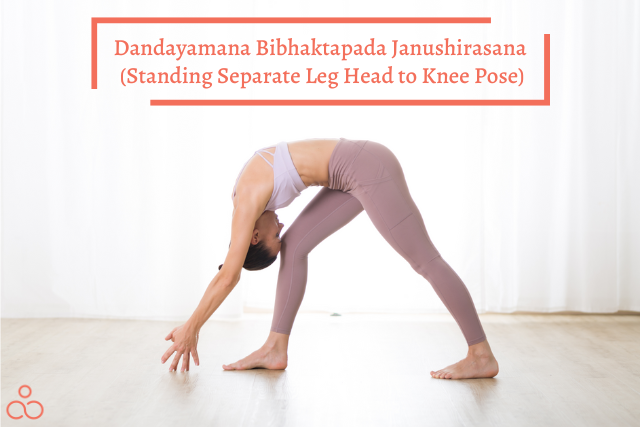
- Tadasana or Tree Pose
Another example of a back-balancing posture is the Tree Pose, also known as Tadasana in Bikram Yoga. This balance pose improves posture while strengthening the knees, ankles, and hips’ joints.
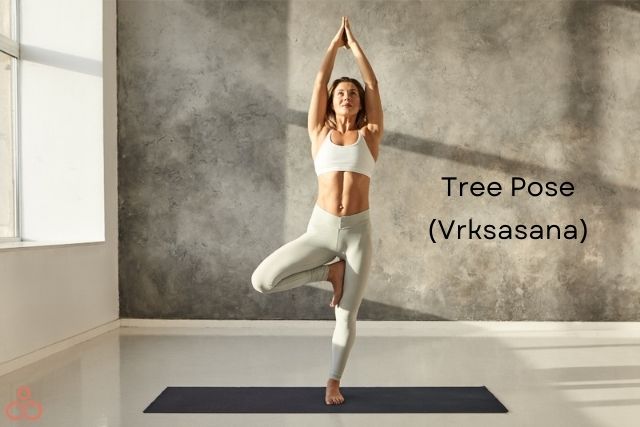
- Padangustasana or Toe Stand
The standing series ends with Toe Stand, a pose that strengthens the feet and expands the range of motion in the ankles, knees, and hips. This pose also requires mental stamina and focus.
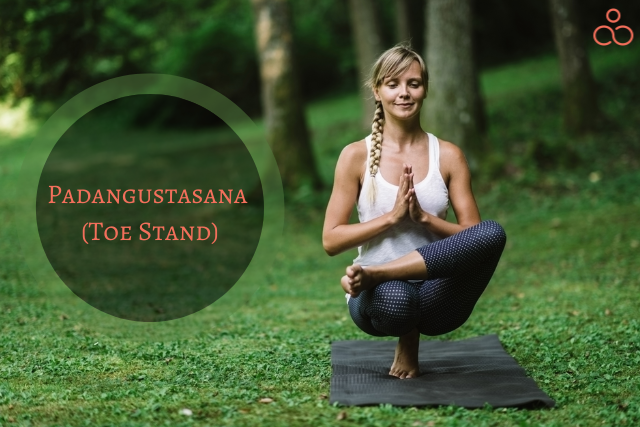
- Savasana or Corpse Pose
Corpse Pose, the most popular yoga pose (Savasana), is located between the standing and sitting series in Bikram yoga.
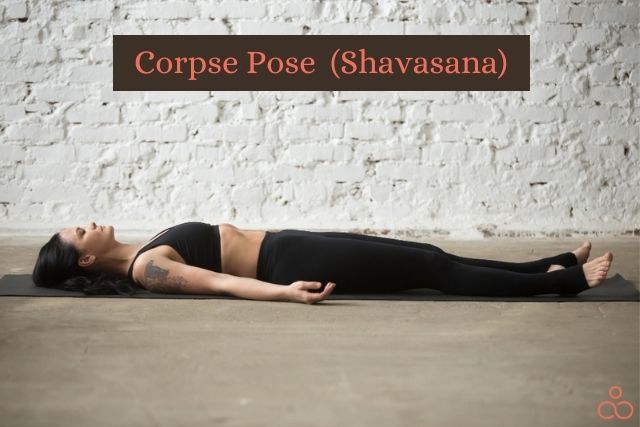
- Pavanamuktasana or Wind Removing Pose
Wind Removing Pose is a great way to relax your hips and relieve lower back pain. This pose also engages your core and increases hip flexibility.
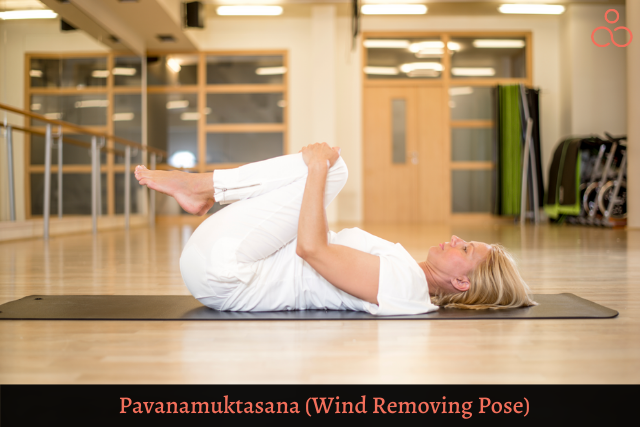
- Pada-Hasthasana or Sit Up
Bikram yoga’s Sit Up pose is a great way to focus your mind, energize your body, and stretch your legs. It helps you center yourself and feel more in control.
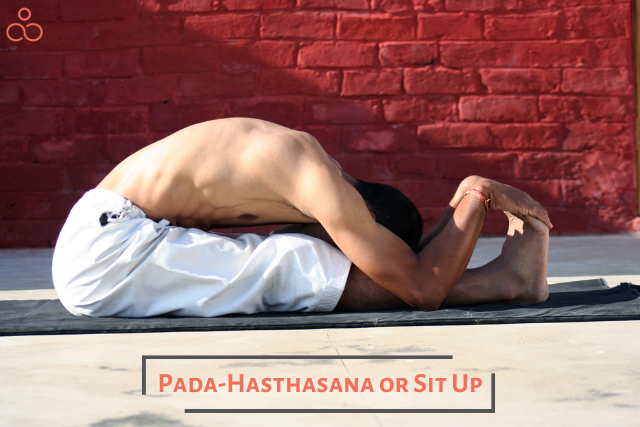
The Cobra Pose is a great way to stretch and strengthen your core, which can help prevent back pain. This pose is easy to do and can be modified depending on your experience level.
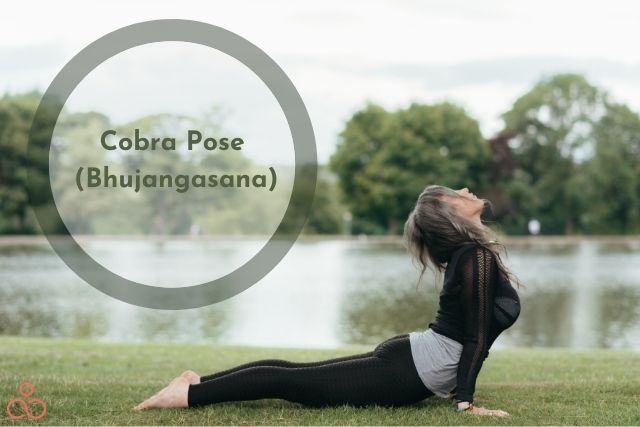
- Salabhasana or Locust Pose
Salabhasana, also known as Locust Pose, is a great backbend that strengthens and stretches the entire body. This pose tones the buttocks, hips, and legs.
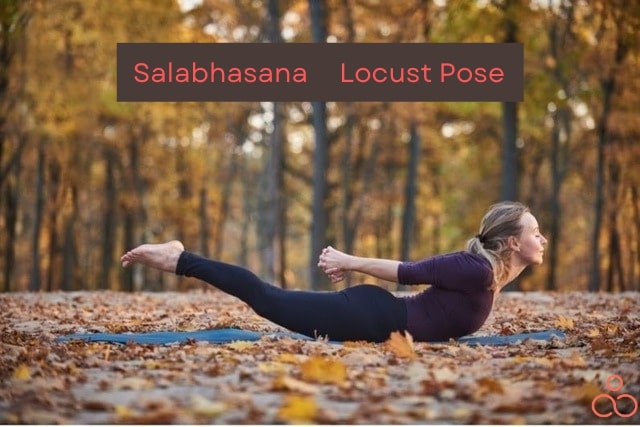
- Poorna Salabhasana or Full Locust Pose
Full Locust Pose is an excellent way to build strength in the mid-section. This pose begins with you lying flat on your stomach. You will then lift your torso, chest, and head off of the ground, and you will extend your arms forward and hold the position.
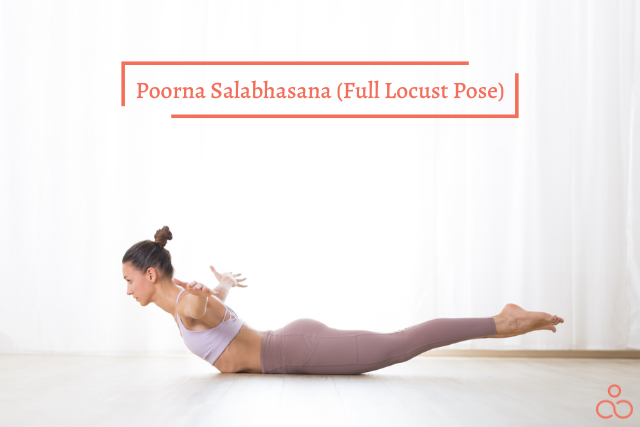
- Dhanurasana or Bow Pose
The Bow Pose is a challenging backbend that opens the chest and shoulders. This pose is invigorating and increases the mobility of the spine.
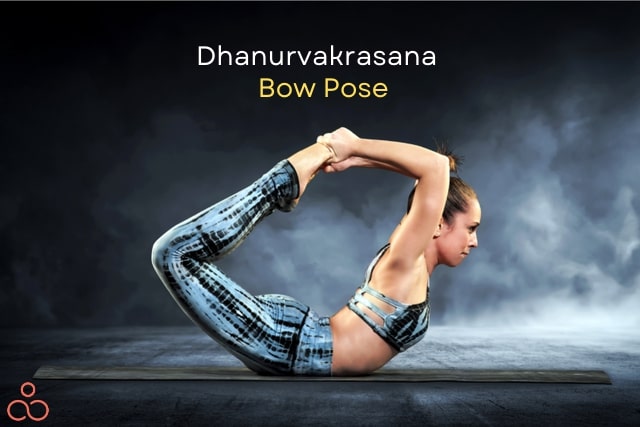
- Supta Vajrasana or Fixed Firm Pose
Do you need a break from all those backbends? Then try Fixed Firm Pose! It’ll stretch your leg muscles, knee joint, ankles, lower back, and hips.
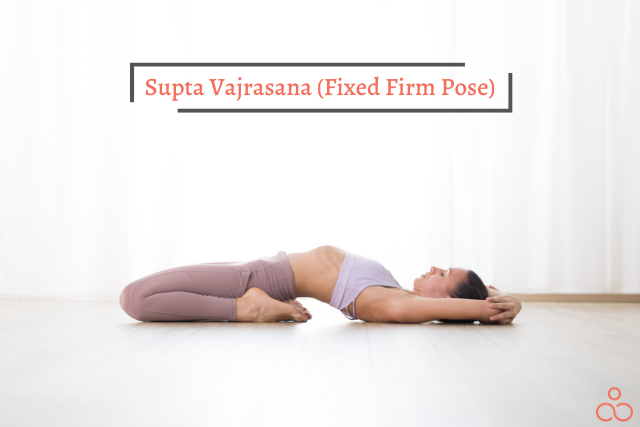
- Ardha Kurmasana or Half Tortoise Pose
The Half Tortoise Pose is a great way to relax and stretch your hips. This pose releases tension in the neck and shoulders while providing a gentle stretch to the hips.
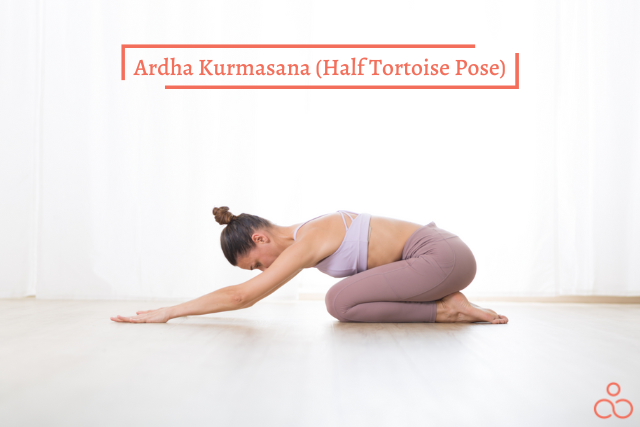
- Ustrasana- Camel Pose
The Camel Pose is the next and final backbend in this yoga sequence. It’s a great pose to open up your chest and improve your posture.
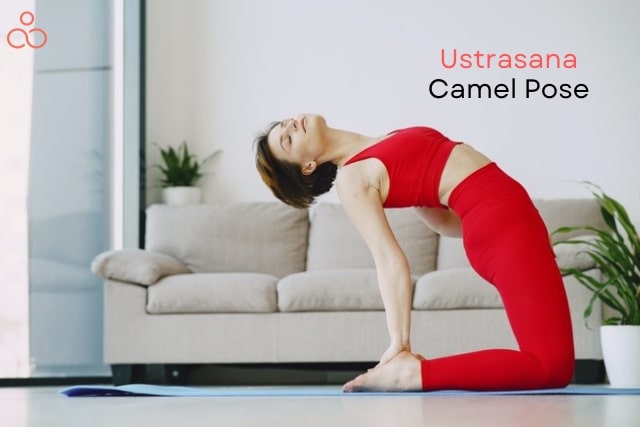
- Sasangasana or Rabbit Pose
Rabbit Pose is an excellent release from backbends, and it’s also an amazing way to stretch and decompress the back spine.
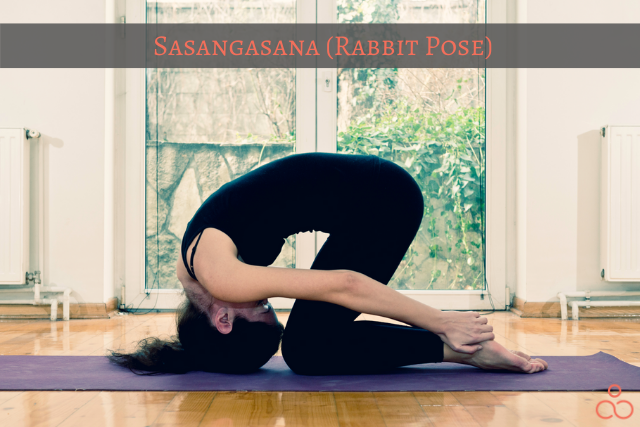
- Janushirasana with Paschimottanasana or Head-to-Knee Pose and Stretching Pose
If you want an intense seated stretch, combine Head-to-Knee Pose with Stretching Pose, and this will give you the best results.
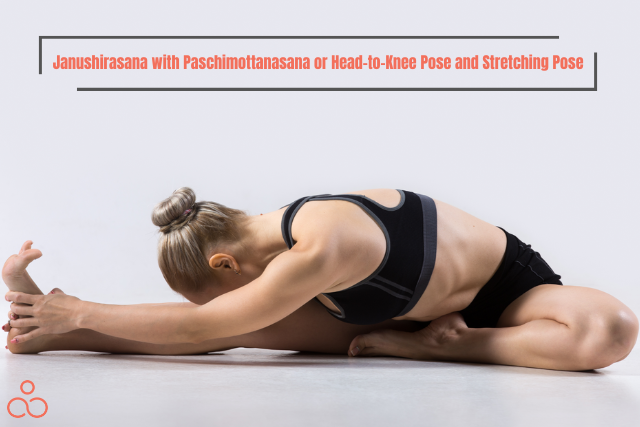
- Ardha Matsyendrasana or Spine Twisting Pose
Do you often feel like your spine is out of alignment? If so, a spine-twisting pose (Ardha Matsyendrasana) can help to realign it. This pose is performed on both sides and helps to improve your spinal health. This pose is also known as the Half Lord of the Fishes Pose.
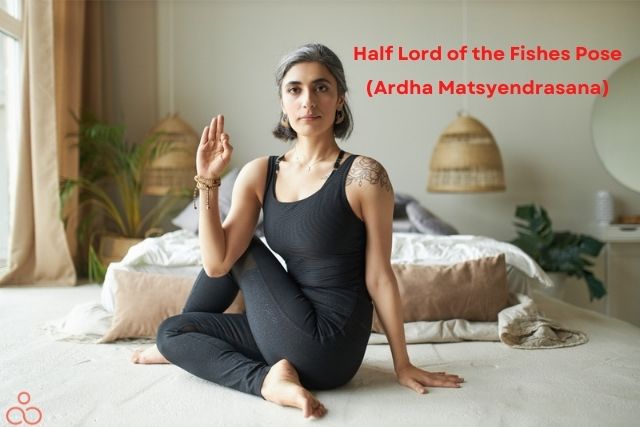
- Kapalbhati Pranayama or Skull Polishing
The Bikram sequence finishes in a kneeling posture and a breathing exercise. This is accomplished through the use of Kapalbhati (a breathing exercise) while being in Vajrasana.
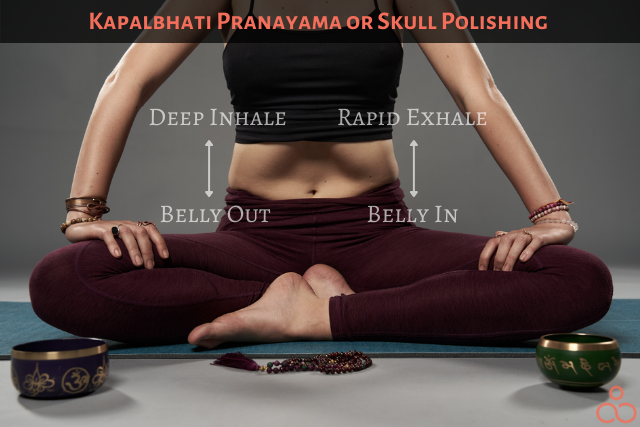
Key Differences between Hot Yoga and Bikram Yoga
There are a few key differences between Bikram Yoga and Hot Yoga. While it is true that hot Yoga may start with some stretching exercises, it incorporates other aspects as well. These include poses that would be more familiar to people who have practiced Hatha or Vinyasa Yoga before. By contrast, Bikram’s 26 postures are done in various positions. So you won’t need to take a break from the heat for anything but water breaks. So if you’re looking for an intense workout routine where you can’t sweat out toxins and see results without having to go through a bunch of different routines, then Bikram yoga might be the workout for you.
Bikram Yoga is also done in a 105-degree Fahrenheit (40.5 degrees celsius) room with 40% humidity. This may not sound like it would be hot, but consider that even though people don’t realize it, their body temperature rises quite a bit as they work out. This causes the body to sweat a lot more than it would in a more relaxed environment, thus ridding it of toxins and other pollutants which can lead to disease.
The following table lists all these differences for those who are a bit pickier and easier to understand through sections and columns.
| Differentiating Factors | Bikram Yoga | Hot Yoga |
Poses | The poses that are described above, all belong to Bikram Yoga, that is there are a fixed 26 poses in it. | Hot Yoga, on the other hand, is more generic and has a variety of pose sequences. Often it tends to be flow type class. |
| Temperature Conditions | 105 degree F (40.5 degree C) | Between 90 degrees F to 109 degrees F (32 to 42 degree C) |
Lighting | Bright lighting conditions and also mirrored walls for the participants are present so that they can adjust accordingly | No conditions are fixed and totally depends on the instructors and participants’ preferences |
| Training | Bikram-certification is required | Any Yoga certification |
Sound | No music or clapping | Again, it depends on the instructor’s choice of motivating the participants |
Interactions | Instructors don’t correct the poses of the students and they are more on their own. Also, you cannot talk during Bikram sessions. | No such restrictions exist in Hot Yoga in general. |
How can Hot Yoga benefit you?
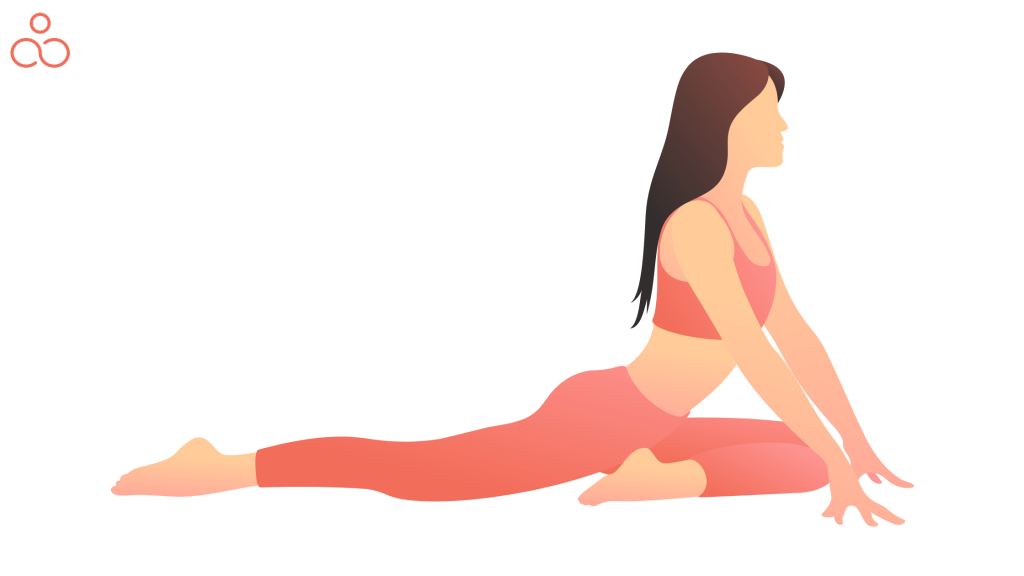
Is hot Yoga worth all the vigor and sweat? Absolutely yes! And to prove to you that, we have the following list of benefits that it can readily shower on you.
- Your flexibility gets enhanced!
Yoga itself is the exercise that makes your muscles stretch, and thus, your body becomes more flexible than ever. And since hot Yoga incorporates all the rigorous and immense physical stretching and pulling, it makes your body even more flexible. The heat that gets generated makes your muscles loosen, and thus, the poses of yoga are better executed. And as they are better executed, your body archives better flexibility as well.
Also, the heat makes your joints and muscles warm. As a result of which joint and muscle pains are relieved. According to a study done in 2013, it was found out that doing Bikram Yoga for 8 weeks, participants had more flexibility in their low back, shoulders, and hamstrings than the control group.
- Levels down your depressive mood
Did you know your body has happy hormones? Yes! Serotonin and Dopamine are the two main happy hormones that your body secretes. And, surprisingly, when you exercise, they get secreted easily. And there is one study supporting yoga’s efficacy in the treatment of depression. So, hot Yoga includes all the vigorous yoga exercises that readily make your body release happy hormones. As a result, it helps in leveling down your depressive moods considerably. So, do hot Yoga and keep your lovely smile intact from the outside! Also, heat generation challenges you mentally, which helps you with better focus and concentration.
- You lose weight!
What can be better news than the guarantee of losing weight and getting in good shape? Hot Yoga helps you do so. Based on one study, Hot yoga helps in losing calories. The strenuous exercises involved in hot yoga make you burn loads of calories. As a result, you lose substantial weight and get in your dream shape. On average, a 90 minutes hot Yoga session burns up to 400-600 calories.
- Your blood sugar level gets under control.
When you perform hot Yoga, you burn loads of calories. Therefore, your glucose gets used up in these exercises. As a result, your glucose level gets in check. As per one study, Hot yoga helps in improving glucose intolerance.
- Your cardiovascular system gets enhanced.
Since you practice strenuous exercises, you work on your cardio a lot, which results in enhancing your cardiovascular system. Based on one study, hot yoga or bikram yoga has the ability to improve your cardiovascular system.
- Builds Bone Density
According to one study, practicing Bikram Yoga can help protect or can enhance bone mineral density in premenopausal women, making it an excellent osteoporosis prevention strategy. Yoga increases flexibility, joint lubrication, and range of motion, all of which help avoid the most frequent osteoporosis fractures such as hip, wrist, and vertebral fractures.
- Refreshes you!
When you sweat profusely for an hour-long yoga session, you automatically feel rejuvenated. Thus, you have better focus and a mindset to reform your future task with better efforts.
Points to remember for hot yoga sessions
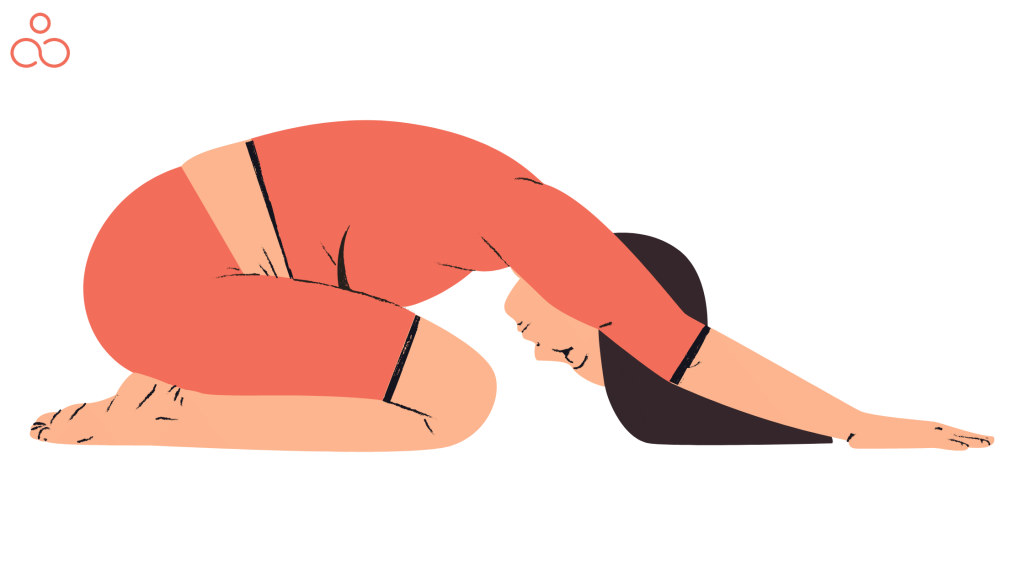
- Do not eat anything bulky or pungent food prior to 24 hours of your sessions because you may be giving out the smell of your detoxified substances in your body. Would you want to smell what your partner’s detoxified elements are? Of Course not! Our partner would also not want the same. So, avoid eating bulky or pungent 24 hours before your session.
- Ensure that your clothes are of the quality that can prevent sweat marks. You are going to sweat excessively. So, better to wear something that does not let your sweat leave marks.
- Carry a towel and ensure the application of deodorant. Here again, comes the factor of sweating. Your sweating is inevitable in your hot yoga session. So, body odor is nothing unnatural or uncommon. But, you can always prevent or make the situation better. So, apply deodorants!
- Ensure that you do not use your sweat frequently. Use our towels only if it is essential. Sweating helps your body cool off. Constant wiping off of your sweat will increase the heat.
How old do I need to be to practice hot yoga?
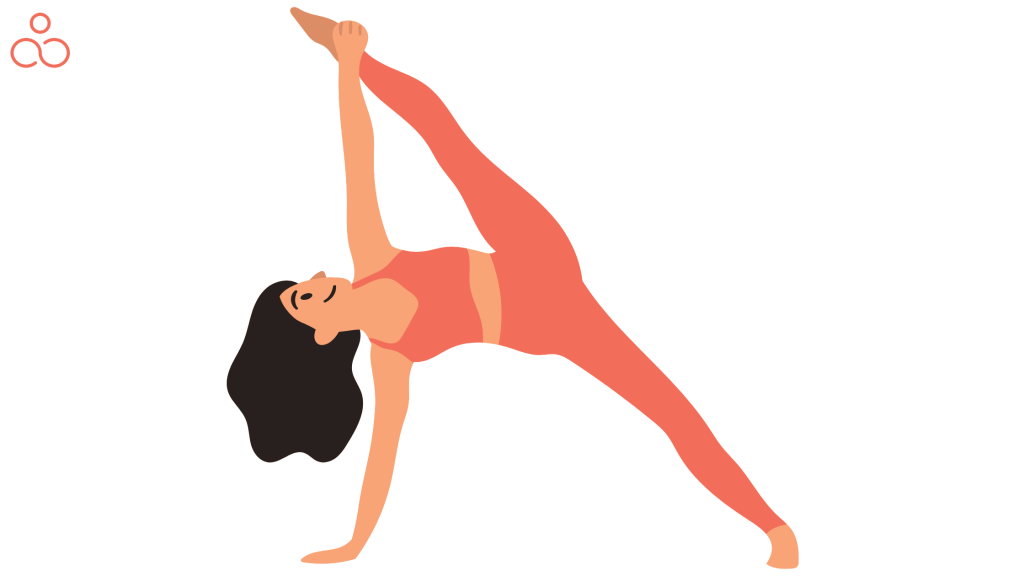
You should be a minimum of 14 years of age to practice hot yoga. Also, if you are diagnosed with any illness like respiratory problems, cardiac problems, or conceiving, you must not perform hot yoga sessions at all.
Tips for beginners
- Hot Yoga is not as easy as it sounds. If you are planning to begin the hot yoga sessions, ensure you keep in mind the following points ideally.
- Water! Water! Water! Drink plenty of water. You are going to sweat vigorously. Thus, there will be a high chance of you getting dehydrated. So, water should become your best friend in your hot yoga sessions.
- Keep your tummy light. The heat and the exercises are going to shake you up from the inside out. So, a heavy stomach will be hindering you from doing the exercises optimally. You may also feel nauseous, and indigestion may also be a factor here. So, eat light before your sessions.
- That does not mean you eat too light. Where would you get the energy from then? Eat a meal that will give you the energy to pull through the session fruitfully without making your stomach feel heavy.
- Be punctual. Reaching early will help you register the perfect spot for yourself. Arriving late will result in you being hurt in a place among the crowd. Not nice, right? So, though we know better late than never, never following never late is even better!
Summing It Up!
Hot Yoga is a unique way to detoxify your body and has numerous health and fitness benefits for both the mind and body. It can aid in burning calories, the development of bone density, the improvement of cardiovascular fitness, and the improvement of flexibility. It may also aid in relieving depression and stress.
If you’re looking for an intense workout that will help strengthen your mind-body connection or even lose weight, then give these spine-twisting, intense, and hyper poses a try!
In case you have any health-related issues or have a history of fainting, or heat sensitivity, ensure to consult with your doctor before joining any hot yoga class.

